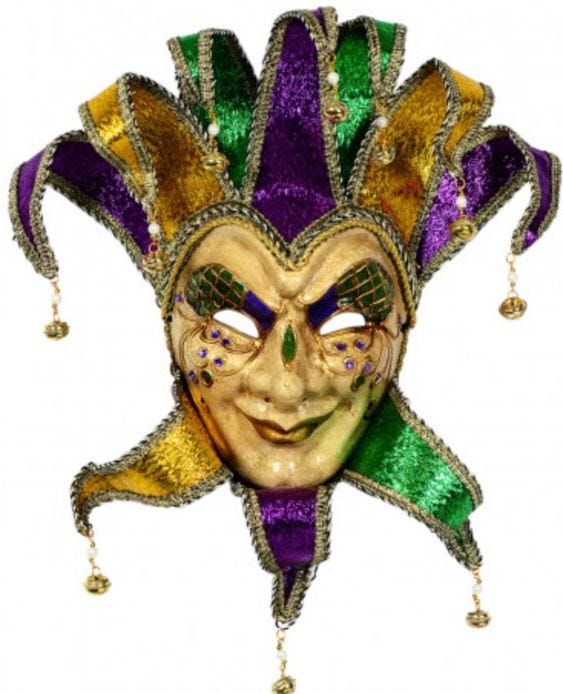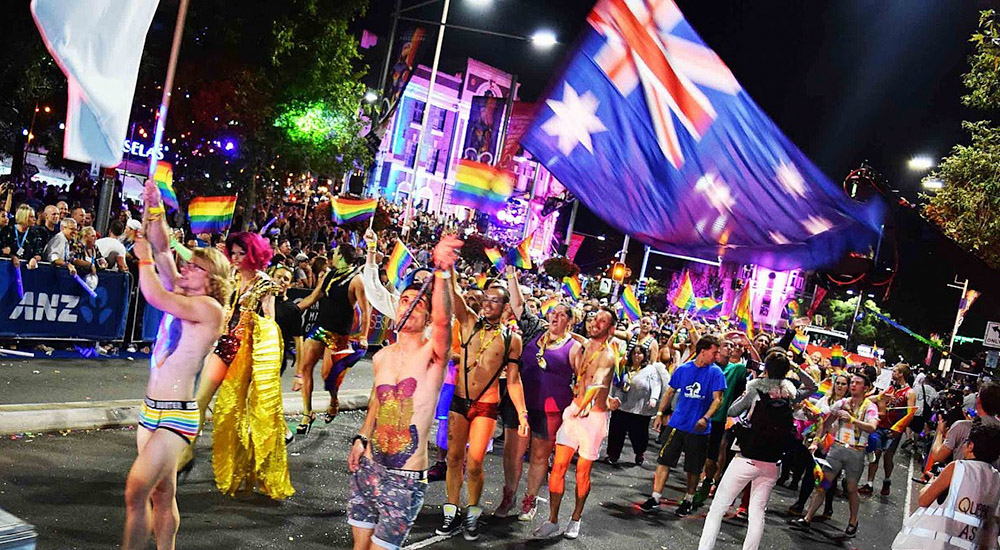Gallery
Photos from events, contest for the best costume, videos from master classes.
 |  |
 |  |
 |  |
 |  |
 |  |
 |  |
Why Mardi Gras is named Mardi Gras Cool fact: In French, 'Mardi Gras' means 'Fat Tuesdays'. Scenes of Sydney's Gay and Lesbian Mardi Gras Celebration on March 2, 2013 in Sydney Australia. The Sydney Gay and Lesbian Mardi Gras or Sydney Mardi Gras is an event in Sydney, New South Wales attended by hundreds of thousands of people from around Australia and overseas. One of the largest LGBT festivals in the world , Mardi Gras is the largest Pride event in Oceania . Why is Mardi Gras celebrated in Australia? First things first: Mardi Gras holds no association with the New Orleans Mardi Gras, which has religious origins relating to the beginning of Lent. That As such that first Mardi Gras march was a major civil rights milestone beyond the gay community. Up to 3,000 people marched in an incident-free parade in 1979. In 1980 a key new element was introduced – the post-parade party. The face of the modern Mardi Gras we know today was taking shape. The 47th annual Sydney Gay and Lesbian Mardi Gras parade is set to attract huge crowds on 1 March. Credit: AAP Over 11,000 participants are expected to descend on Sydney's streets on Saturday Sydney Mardi Gras today. Mardi Gras has grown to be one of the major events of the Sydney calendar. Today it is a festival held over several weeks, culminating in a parade that attracts more than 200,000 participants and spectators. The survival and success of Mardi Gras represents a remarkable and defining change in public attitudes. The history of Mardi Gras in Australia is a bloody one, with each win building on the sacrifice of people who were brave enough to fight. Poll and Ware were the leaders of a new group called Fun Fact: in French, Mardi Gras actually translates to ‘Fat Tuesdays’. Why, you may ask? It seems like the term has nothing to do with the biggest LGBTIQ celebration in the world, set in glowing Sydney, with people flocking from all over the world to sing, laugh, dress lavishly, dance provocatively, and feel that glorious feeling of Protests following first Mardi Gras A series of protests followed, and in April 1979 the legislation that made the original Mardi Gras arrests possible was repealed by the New South Wales parliament – people can now assemble on the streets of Sydney without a permit, they simply need to notify the police. The ubiquitous cry of ‘Happy Mardi Gras’ reflects a genuine, positive community engagement on a scale the original marchers could never have imagined. Public protest and ‘coming out’ began in Sydney with Gay Liberation around 1972. We never dreamed Mardi Gras would become so big and so integrated into the economic life of our city. While Mardi Gras is celebrated in various forms around the world, it is most famously associated with New Orleans, Louisiana. Over the centuries, Mardi Gras in New Orleans has evolved into a grand and extravagant celebration, deeply rooted in the city’s unique blend of French, African, Spanish, and Caribbean cultures. Five thousand people took part in the second Gay Mardi Gras on a bitterly cold Saturday night of 30th June 1979 – and there were no arrests. Without the police attack on the first Mardi Gras, there may not have been a second one. The second Mardi Gras in 1979 was accompanied by a fair, film festival and street march. Why is it called Mardi Gras? Mardi Gras comes from the French for ‘Fat Tuesday’. It is referred to as such because it is the last chance before the fast to enjoy fatty, rich foods. While many Christians no longer fast, the tradition of eating rich food on this day has persisted! 1. United Kingdom, Ireland, Australia & Canada Why is Mardi Gras also called Fat Tuesday? Well, it’s simple: in French, "mardi" means Tuesday and "gras” means fat. Australia, and Canada—this gluttonous day is also called Pancake Day Known as Mardi Gras in the United States and celebrated throughout the world by different names, the annual festival brings with it a unique set of local customs. Also known as Carnival, the events surrounding the festivities culminate on Fat Tuesday, the name of which is translated directly from the French (Mardi = Tuesday, Gras = Fat). The Super Sunday Mardi Gras Indian parade rolls in Central City in New Orleans, Sunday, March 24, 2024. The parade, which begins and ends at A.L. Davis Park, highlights the connection between So it is probably what the term "Mardi Gras" stood for and the acts it was associated with that led it to be adopted as a term for Gay Pride festivals; i.e. "Mardi Gras" was known as a "celebration of life" and the last day of freedom before the strict religious sacrifice of lent commences, hence Mardi Gras is basically the antithesis of abiding the rules set by oneself (i.e. lent). The Carnival season there opens on Twelfth Night (also called Epiphany, which is observed on January 6) and climaxes with the Mardi Gras festivities commencing 10 days before Shrove Tuesday. This period is filled with citywide revelry and elaborate parades, both day and night, building up to Mardi Gras and the Rex parade. King cakes are most popular in New Orleans and the Gulf Coast region, but they can also be found in other areas where Mardi Gras is celebrated. Why Can't You Eat King Cake Before Jan. 6? Mardi Gras is a Christian holiday and popular cultural phenomenon that dates back thousands of years to pagan spring and fertility rites. Also known as Carnival or Carnaval, it’s celebrated in
Articles and news, personal stories, interviews with experts.
Photos from events, contest for the best costume, videos from master classes.
 |  |
 |  |
 |  |
 |  |
 |  |
 |  |